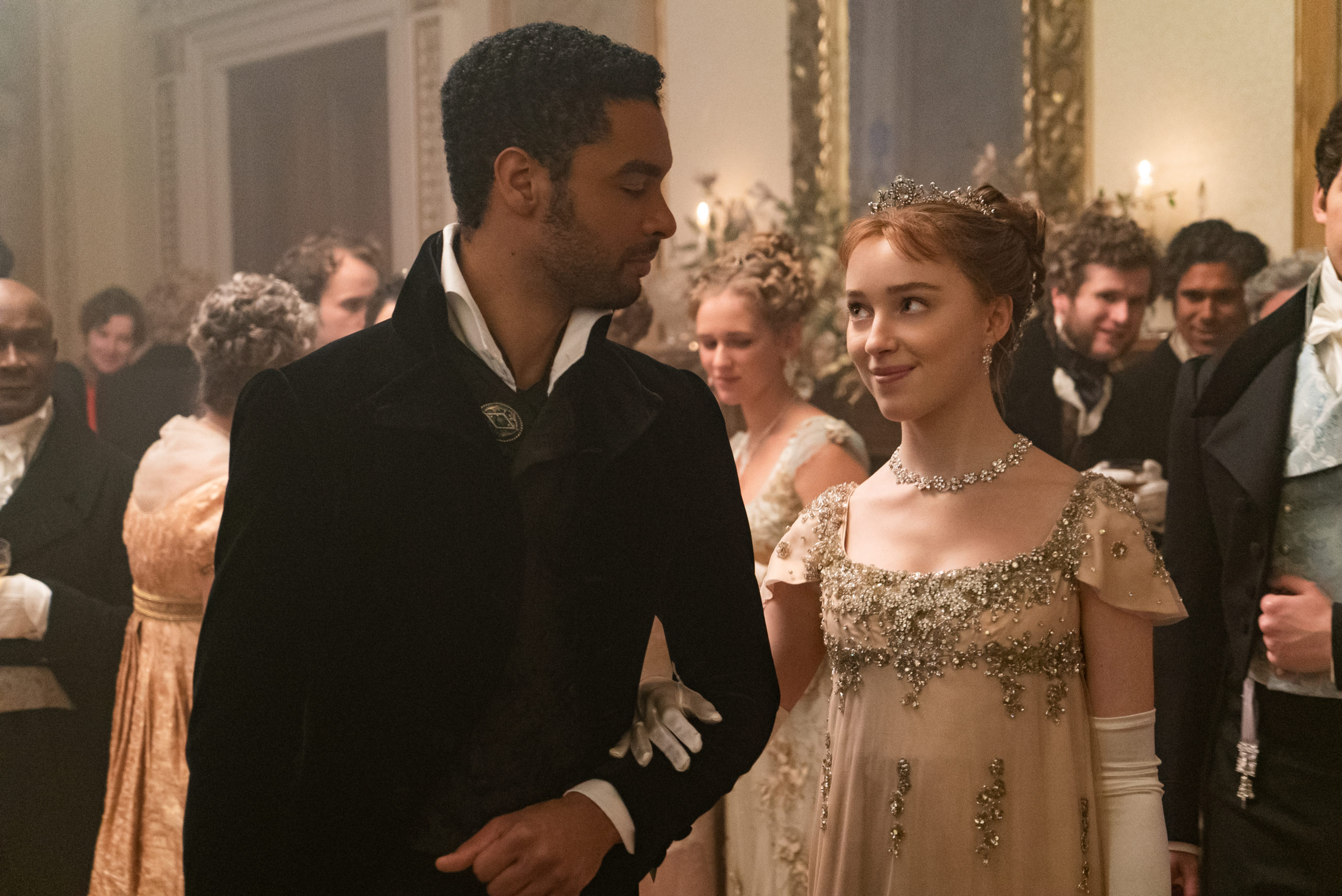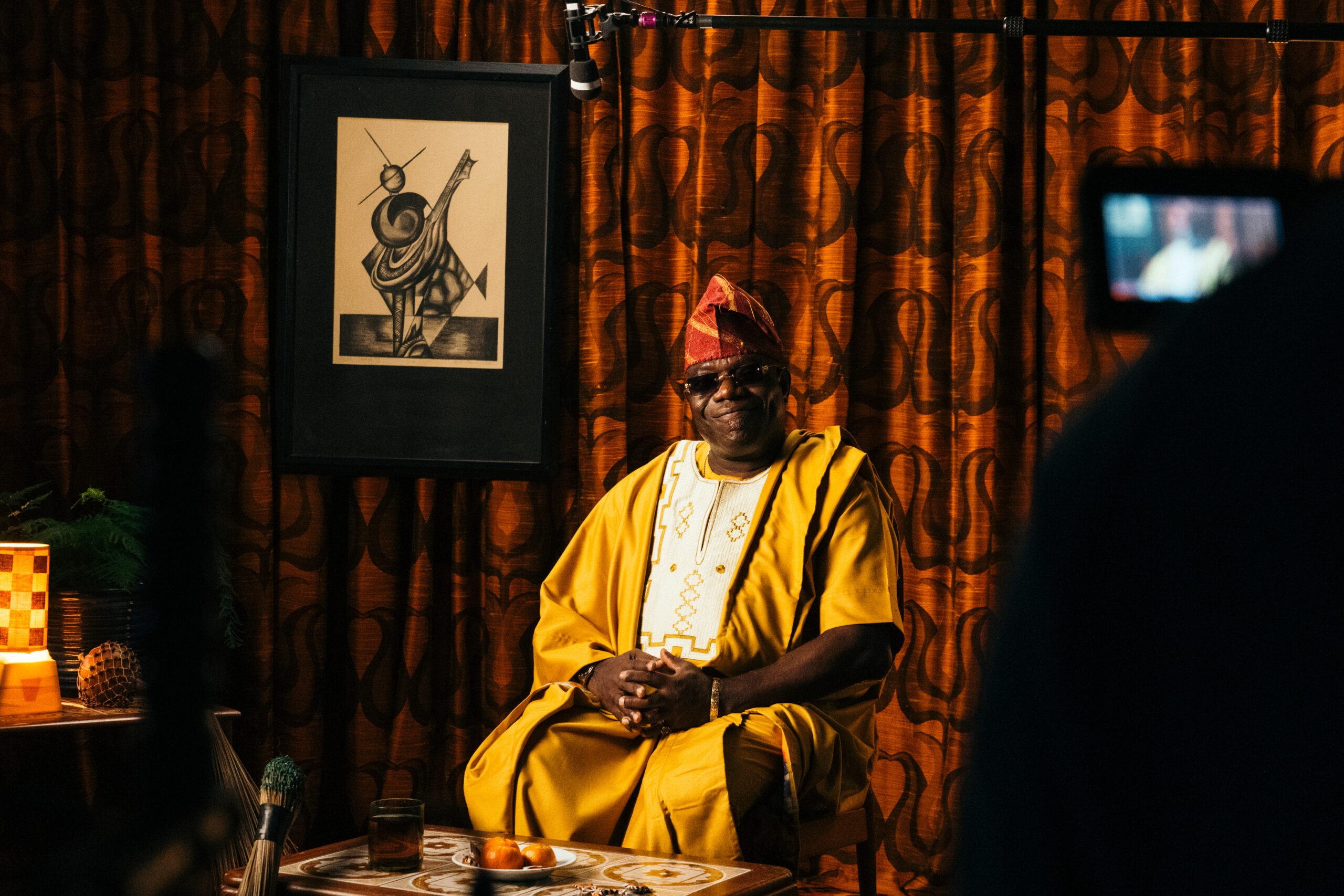
How Bridgerton, the ‘diverse’ period drama, actually treats people of colour
While there are more fresh faces on screen thanks to colour-blind casting and a move away from idealised historical accuracy, our treatment of race in period dramas still leaves a lot to be desired.
Madhu Manivannan
27 Dec 2020
Still via Liam Daniel/Netflix
In many ways, Netflix’s first Shondaland-produced period drama, Bridgerton, indulges in the conventions of its genre. The show revolves around the well-to-do (white) Bridgerton family as they endeavour to navigate the mores of Regency society and marry their eldest daughter, Daphne (Phoebe Dynevor), to a suitable man. It offers a glimpse into the glittery, opulent and debaucherous world of the upper crust of English aristocracy. However, a modern sensibility permeates Bridgerton, with balls soundtracked by classical covers of songs by Billie Eilish and Ariana Grande, costumes that are almost satirically gaudy and an interest in representation, with commoners and high society alike cast diversely.
In 2017, Julian Fellowes, showrunner of Downton Abbey, sparked controversy when, in an interview with The Stage, he defended the all-white cast for the West End musical Half a Sixpence by stating that “you can’t make something untruthful”. Fellowes’ comments brought to question the very purpose of the British period drama. Are they intended to evoke truth in emotion or to present audiences with the illusion that they are witnessing a nostalgic time capsule, bound by historical fact?
For many years, the creators of British period dramas believed the latter. Audiences internationally and domestically have long been captivated by British film and television depicting stories of romance, nobility and subterfuge amidst pastoral scenery and ornate manors, often based on England’s extensive literary canon. However, this hyper fixation on an idealised version of the past has led to a haemorrhaging of British talent, with actors of colour such as Parminder Nagra, Thandie Newton and David Oyelowo speaking out about how the limited availability of work in the UK has led them to pursue opportunities across the pond. As more actors have opened up about the lack of diversity within the industry, such as through 2016’s #OscarsSoWhite movement, the UK’s film and TV industry has been left to contend with the issue.
“Should the issue of race be swept under the rug or should it be explicitly addressed on screen?”
Although cries of historical accuracy had previously presented a boon to reticent directors of period dramas, it has become much more difficult to ignore the increasing number of conversations surrounding racism in the media industries. As a result, more opportunities are open to British actors of colour, with film and TV makers able to draw upon a wider pool of talent. Colour-blind casting can enhance the appeal of the genre’s characteristic melodrama and ornate aesthetics, creating a world with which a wider audience can identify. Reflecting on the diverse cast of The Personal History of David Copperfield, writer and director Armando Iannucci stated that he sought to depict the fact that “London then and London now was and is a global city”. However, it also presents film and TV makers with a conundrum: should the issue of race be swept under the rug or should it be explicitly addressed on screen?
As Newton stated in 2017, Britain’s constant output of period dramas had left her to be either excluded from the genre altogether or to play “someone who’s being racially abused”. It is clear now that neither approach is palatable to audiences. On one hand, the inclusion of racialised characters, such as the unwitting victims of the titular character in 2016’s Lady Macbeth drew mixed responses, with some praising it as an incisive critique of white womanhood, while others viewed the race of the actors as a tool used to distastefully “[heighten] the victimization” of their characters. On the other hand, Sofia Coppola’s adaptation of The Beguiled drew criticism for omitting the only Black character present in the novel.
Despite Coppola stating that her intention in doing so was to avoid contributing to a long list of “how slaves have been appropriated and “given a voice” by white artists”, some viewed her explanation as shirking “an obligation to dig deeper”. Although criticism surrounding The Beguiled is rooted in the context of American race relations, it raises the issue of what it means to create a diverse British period drama. How are these delightfully twee depictions of splendour that have long served as propagations of cultural power interrupted by acknowledgement of the people and systems that made their lifestyles possible?
While the opportunity to answer this question has presented itself, it has largely been ignored. The crutch of historical accuracy has finally been eroded, with directors such as Josie Rourke and Iannucci attributing their use of colour-blind casting in period dramas to research into Britain’s hidden diverse history. In recent years, actors of colour have been cast as historical figures, such as Bess of Hardwick (Gemma Chan in the 2018 movie Mary Queen of Scots), and Anne Boleyn; with Jodie Turner-Smith set to play the tragic queen in an upcoming Channel 5 drama in 2021.
Like Bridgerton, Netflix’s gothic romance The Haunting of Bly Manor, is an American production, attempting to imitate the conceits of the British period drama. While its isolated Home Counties-esque setting casts an eerie glow on its exploration of love, memory and loss, any semblance of Britishness about the staff and family that inhabit Bly Manor is merely coded by their love of tea.
Cast members T’Nia Miller and Rahul Kohli have spoken about how their cultural backgrounds have influenced their performances, with Miller drawing upon her understanding of what her character, Hannah, might have faced as a Black woman living in a small village and her knowledge of cohesion between Black and South Asian communities in 1980s England, and Kohli taking inspiration from the facial grooming habits of his family members during the era. Yet, in the show, Miller and Kohli’s insight remained merely subtext, presenting their characters as half-formed, their race merely an accessory to accent the show’s exploration of class conflict.
“While the ills of racism have apparently been defeated in Bridgerton, the show itself suffers from aspects of prejudice and discrimination”
Bridgerton chooses to rewrite history altogether. The diversity of its sought-after debutantes and bachelors is explained by the fact that the interracial marriage between King George III (James Fleet) and Queen Charlotte (Golda Roshuevel) led to the elevation of people of colour into nobility, their love uniting a society once fractured by race. The Duke of Hastings (Regé-Jean Page) appears keenly aware of how delicately Bridgerton‘s post-racial society hangs, likening its fragile foundations to his own distrust of emotional attachments. Despite this, the show devotes little time to the implications of its historical deviations. Instead, it chooses to focus on how the women of the show resist the limits of their gilded cages, depicting them exploring their sexualities, wielding the power of gossip and questioning the male gaze in art.
While the ills of racism have apparently been defeated in Bridgerton‘s depiction of 19th century England, the show itself suffers from aspects of prejudice and discrimination that persist today. The show’s diversity rings hollow given that dark-skinned Black women are mostly relegated to the background. Indeed, while people of colour are embraced into the fold of Bridgerton‘s noble families, the show still appears to indicate they are outliers, as the majority of its main cast is white. The portrayal of dark-skinned Black men on the show also leaves much to be desired, as Simon’s father is portrayed as cruel and abusive. Although supposedly colour-blind period dramas pose as distractions or solutions to modern-day racism, they are unable to escape it.
Diverse period dramas tell us that it’s anyone’s right to frolic in bucolic fields, dance in ornate ball gowns at lavish parties, conduct lusty affairs and scheme their way to the top. They offer joy and hope, allowing for a momentary suspension of belief from the contentious relationship that many British people of colour have with notions of Britishness. But while recent period dramas have exhibited an awareness of such tensions, they are yet to fully engage with and deconstruct them, instead unsatisfactorily slotting people of colour into this apparent collective yearning for an imagined past.









